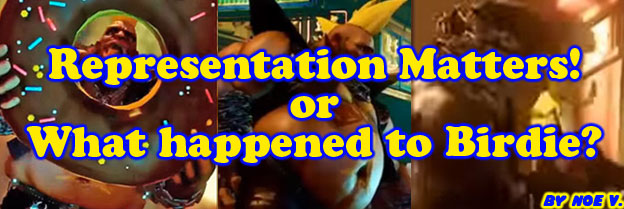
When players think about the greatest cast in fighting game history they often point to the original World Warriors. The figures in Street Fighter II hit all of the right notes and were universally accepted. They set a standard back in 1991 yet to be topped (even by Capcom). There is something that most people do not know and even die-hard fans of Street Fighter sometimes forget. The original lineup was much different. It was dominated by white characters and was culturally insensitive. Let us look at what Capcom had to change in order to give audiences a memorable experience.
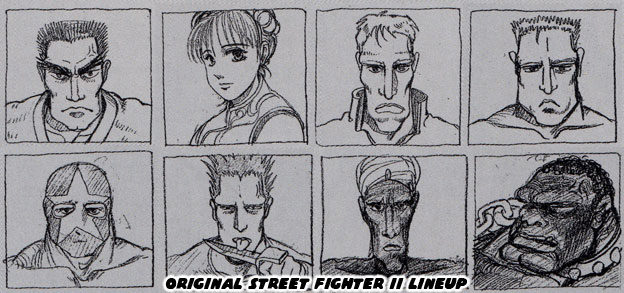
Audiences might be able to pick out a few characters from the lineup that made it to the final version. There was a karate guy, possibly Ryu. Next to him was a Chinese girl, possibly Chun-Li and near the bottom was a dark skinned person in a turban. This Indian character must have become Dhalsim. Who were the other characters? Where was Ken and E. Honda? Where was Zangief and Blanka? Well there were actually two wrestlers in the original lineup. A masked wrestler and a more traditional pro wrestler. There was a boxer, an assassin and a beast man rounding out the group. We could guess that these characters were placeholders. A rough outline for something that had would be changed. The studio had their work cut out for them. The planner on the original Street Fighter had left for SNK. The game found moderate success and arcade owners were asking for a sequel. The team at Capcom tried to create one called Street Fighter '89. It went in a radical new direction, one that was prompted by the runaway success of Taito's Double Dragon. The next Street Fighter would be a brawling game, a beat-em-up using up to three players instead of two. Guy was supposed to replace Ryu, Cody was supposed to replace Ken and a wrestler was thrown in for good measure. Arcade owners did not want Capcom to change the one-on-one concept so the game was relabeled Final Fight. Work on Street Fighter II started all over again.
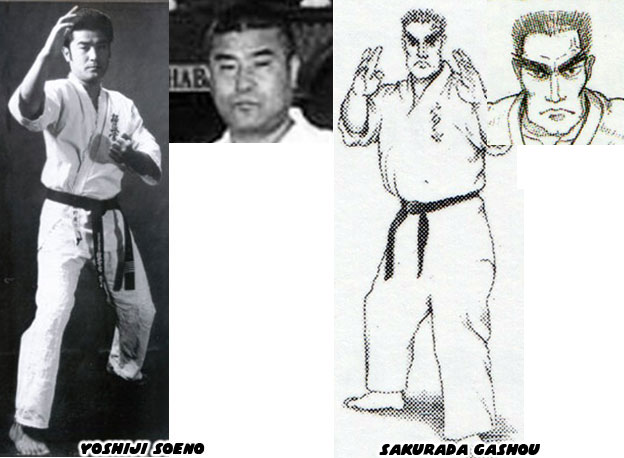
Ryu was not a lock for the main character. Well, Capcom obviously wanted to make a Japanese character the star and make sure that karate was represented. The designers thought that if the first game was about a Mas Oyama-like karate fighter becoming the world's best then the sequel should be about a different fighter that accomplished something very similar. In this case it would be inspired by an understudy of Oyama named Yoshiji Soeno. His in-game counterpart was named Sakurada Gashou. Soeno had beaten the masters of several forms of fighting and had even gone to Thailand to fight their best as well. The Black Cobra was a person that he was supposed to face that inspired the legend of Sagat.
Something was missing with Sakurada. He looked as stern as Soeno, one of the toughest masters of karate but at the same time Sakurada lacked any real personality. The design was a bit bland actually. There was nothing memorable about the character as he was. His black belt and uniform were very much off the shelf. He could have been interchangeable with any generic karateka. The designers working on characters for Street Fighter II was expanded by Capcom. New concepts for the main fighter were explored. The first attempt at bringing back Ryu was highly dubious. He no longer looked like the karate fighter from the first game, instead he looked like he popped out of the pages of a post apocalyptic comic book. When I tell people that Tetsuo Hara had a profound influence on the designers at Capcom I meant it. Ryu was a dead-ringer for Kenshiro, same leather jacket, same shoulder pad and all. The headband was the only thing that made him different.
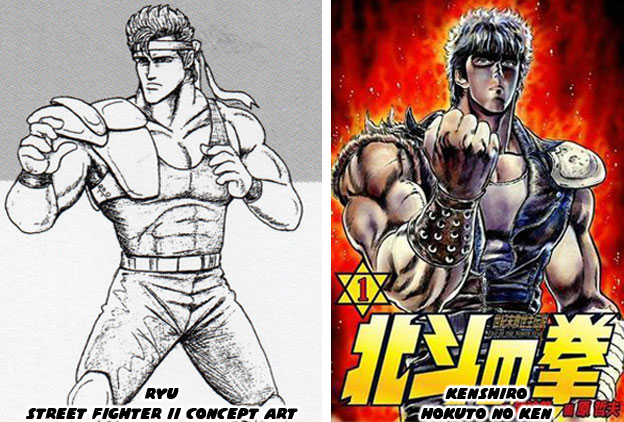
Poaching a popular character wouldn't work with audiences. As the artists were scrambling to redesign the star of the game the attention was focused on the rest of the cast. The studio knew that they wanted a female character in the game. Given that kung-fu was the root of the Asian fighting arts then it had to be represented in the sequel. The original Street Fighter had traditional kung-fu archetypes Lee and Gen representing the art. The next time it would be a Chinese girl nicknamed the China Daughter. Could Chun-Li have been meant to be a daughter or granddaughter to Lee or Gen? We may never know. What we do know was that the original designs for the female character were bland as well. The original Chun-Li was a very generic design. Her face was very youthful, her eyes large and animated, the look could have been used in any manga or anime series at the time. Her uniform was very traditional and like Ryu's it was something that could have been pulled off of the shelf.
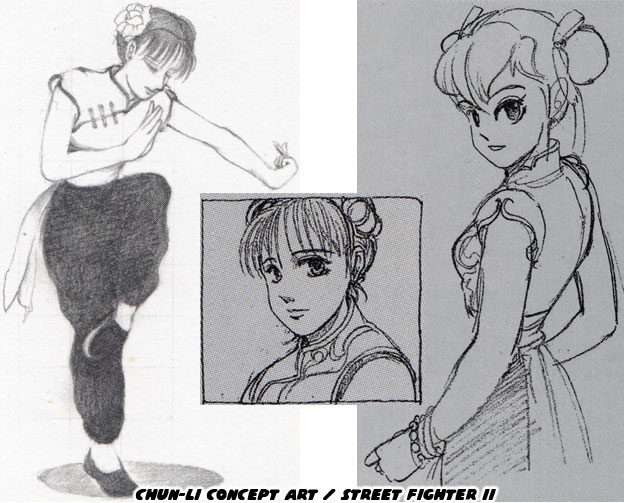
Chun-Li and Ryu needed some major work. They were not the only ones that needed to seriously be rethought. The most offensive figure in the original lineup was the wild man, Anabebe. This figure was very grotesque, very crude and based on a very dark era in world history. Anabebe had all the characteristics of a black brute. Big lips, dark skin, tight curly hair, he was for all intents and purposes a caricature of black slaves. As if there were any doubts the character was even presented with a collar and a chain. The stereotype of the black man being a savage, an unintelligent, unfeeling brute that only responded to violence was as old as slavery itself. Anabebe was designed as the largest character in the game, standing about 7' 5". He would have been larger than Sagat or Zangief. I sometimes wonder what would have happened if Capcom had followed through with this character. Would his owners have to lock him down in between matches? Would they have been animated using whips against the wild man? Looking at the character I shudder to think that the developers working at Capcom, some of whom I consider to be personal heroes, thought this was a concept worth pursuing.
Centuries of racist campaigning against black people was sadly very effective. For generations slave owners often used religious texts as well as fraudulent scientific and sociological studies to prove that slaves were inferior creatures. They would dehumanize them, speak about them in animalistic terms as if they were mules. They would say terrible things such as blacks were highly tolerant to pain, didn't need to eat or sleep much like other beasts of burden. They could be controlled with violence, terrorism and whippings because that was the only language they understood. As slaves and abolitionists began to fight for equality and freedom then different interpretations of the black emerged. They suddenly became lazy and shiftless when just a few years prior they were workhorses. They became impossible to teach, to raise and become incorporated into society. There were many ugly caricatures of blacks made through most of the 19th and 20th centuries. These parodies reached every corner of the world, including Japan. Please watch the documentary Ethnic Notions to get a history lesson on the origins of Anabebe's design.
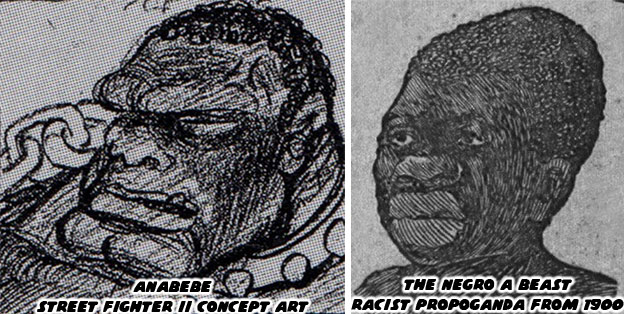
I have to remind myself that Japan has a history of being culturally isolated. The nation remained closed off until 1853 when the US Commodore Matthew Perry took four warships to Japan to "insist" that they begin opening trade routes with the rest of the world. Many citizens and not solely the Japanese can be insensitive to foreign cultures, customs and traditions. Check the history books to find out about the animosity between China, Japan and Korea. There were and continue to be issues with the ways each nation perceives their neighbors. We do not have to go far to see these things, Just look at North America and see how people in the USA, Canada and Mexico all perceived each other as well. What the artists at Capcom had done was take the images that they knew of the savage, one from newspapers and propaganda films and put those ideas on paper. They did not question what they knew, what they heard, they just drew it out.
What was most dangerous was that the Japanese designers were not looking to offend their audience. Notions about black people had become a part of the collective subconscious. People in Asian countries, as well as in the Americas had seen and heard so many negative stereotypes about blacks while growing up that they did not even think twice about them. They simply assumed that there must have been some truth to them. The most heartbreaking proof of how stereotypes had become a problem could be seen in the infamous Doll Test, conducted again and again in this country and around the world. Kids had been conditioned to think that light skinned people were inherently good and dark skinned people were inherently bad. They did not necessarily have to be taught these things by hateful parents. Television, movies, cartoons and even school friends repeated these ideas over and over.
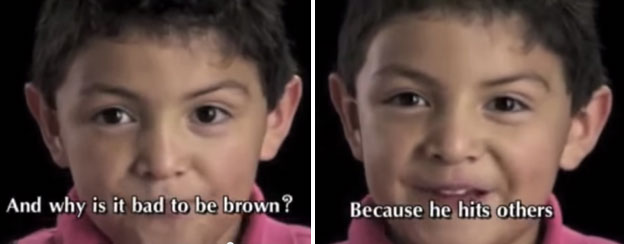
I want you to think about why it is important that the designers at Capcom understand why these caricatures were not acceptable. They have a game that is played all around the world. Not by a few dozen or a few hundred people but instead by millions and millions. With each release they change the course of pop culture. They add a new chapter about what it means to be a Japanese, Chinese, Turkish, Indian, Brazilian, African, British, Russian, US or Mexican. The producer working on Street Fighter has the power to help society adapt and evolve their cultural perceptions. Even if the change is only slightly positive then it is better than repeating old stereotypes. If the team squanders that chance and instead tries to get a laugh because a person is fat or black or anything that makes them not white or Japanese then that progress is lost. These things do not even have to be major changes for the character. The way they behave, the way they act and respond can have an influence on the way players perceive that character. Make minor changes and audiences will either begin to accept or reject that stereotype. Birdie for example was not only made fat but he acted grossly and brutish in many new animations for Street Fighter V. The message he sent to players was that the character had no self respect. Subconsciously it could be accepted that all fat people or all punks had no self respect as well. Street Fighter was simply confirming something that everyone suspected. By the same token Rufus was fat and dumb, very full of himself and a jab at how people from the US make themselves out to be citizens of the greatest nation on Earth. Of course not everyone in the US thought or acted like Rufus. It was a very crude stereotype that did nothing to make the game better.
Making a caricature out of a nationality can be a dangerous act. It can be used by political cartoonists to make ugly parodies of foreigners. Think about how Muslims are depicted in editorial cartoons. Cartooning the prophet Muhammad has now led to the death of dozens of cartoonists and newspaper employees in Europe. Because of that now all Muslims are synonymous with terrorism in the eyes of many. If you stop and think about it the most popular fighting game characters are nothing more than caricatures of people and fighting arts. Japanese people do not really walk around in a karate gi, Chinese people do not walk around in a wushu uniform and Turks do not walk around with barrels of oil. These are not slight caricatures either but extremely exaggerated and dis-proportioned figures. In video games strong men have huge muscles, fat people are incredibly obese and women have large breasts. How sensitive the developers are to a particular style of fighting or culture (even something like punk culture!) can make or break a design. Just a little bit of insight can turn a mediocre character into somebody great. This was something that Capcom used to be able to turn around and something that I do not think the current team is capable of. Sakurada, Anabebe and the China Daughter were very plain caricatures. There was nothing redeeming about these early designs and that's why the team had to go back to the drawing board. But they were not the only characters that needed saving.
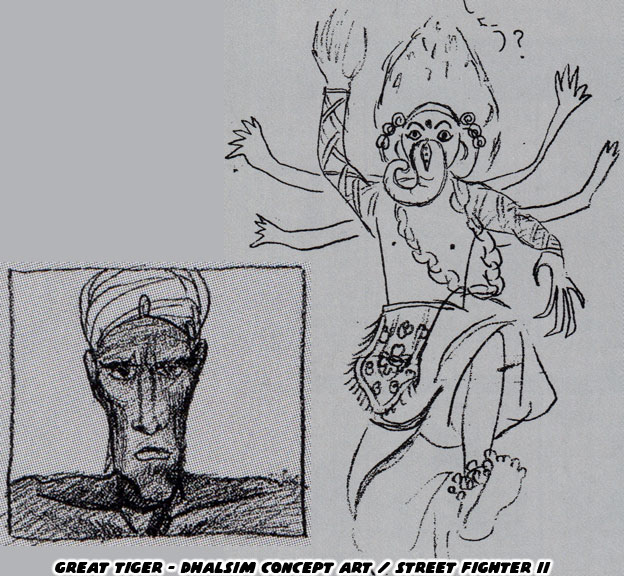
The designers at Capcom wanted to add an Indian mystic to the lineup. Their original plan was for a character in a turban called the Great Tiger. This character may have even been presented in a Ganesha mask with multiple arms. This character was as insensitive to Indians as Anabebe was to blacks. Street Fighter II was off to a terrible start. It looked like nothing was going to save Capcom from themselves. The studio reached out to other teams and the people working on character designs was tripled. At one point there was 20 or 25 people working on the cast alone. It was a number that was never matched by any other studio. What these people did was amazing. The insight that they landed to the project made the World Warriors something special. It was also a reason why I don't think that the current character designers at Capcom can match the greatness of the Street Fighter II team. Without all the extra eyes, extra input and extra insight from a large design team then the current crop of figures and remakes are not as great as they potentially could be. Coming up with a great character was not impossible but the designers would have to work twice as hard and revise twice as much just to match the legacy created by their forefathers. We will take a look at how the Street Fighter II team was able to turn things around in the next blog. As always if you enjoyed this blog and would like to sponsor me please visit my Patreon page and consider donating each month, even as little as $1 would help make better blogs and even podcasts!

Audiences might be able to pick out a few characters from the lineup that made it to the final version. There was a karate guy, possibly Ryu. Next to him was a Chinese girl, possibly Chun-Li and near the bottom was a dark skinned person in a turban. This Indian character must have become Dhalsim. Who were the other characters? Where was Ken and E. Honda? Where was Zangief and Blanka? Well there were actually two wrestlers in the original lineup. A masked wrestler and a more traditional pro wrestler. There was a boxer, an assassin and a beast man rounding out the group. We could guess that these characters were placeholders. A rough outline for something that had would be changed. The studio had their work cut out for them. The planner on the original Street Fighter had left for SNK. The game found moderate success and arcade owners were asking for a sequel. The team at Capcom tried to create one called Street Fighter '89. It went in a radical new direction, one that was prompted by the runaway success of Taito's Double Dragon. The next Street Fighter would be a brawling game, a beat-em-up using up to three players instead of two. Guy was supposed to replace Ryu, Cody was supposed to replace Ken and a wrestler was thrown in for good measure. Arcade owners did not want Capcom to change the one-on-one concept so the game was relabeled Final Fight. Work on Street Fighter II started all over again.

Ryu was not a lock for the main character. Well, Capcom obviously wanted to make a Japanese character the star and make sure that karate was represented. The designers thought that if the first game was about a Mas Oyama-like karate fighter becoming the world's best then the sequel should be about a different fighter that accomplished something very similar. In this case it would be inspired by an understudy of Oyama named Yoshiji Soeno. His in-game counterpart was named Sakurada Gashou. Soeno had beaten the masters of several forms of fighting and had even gone to Thailand to fight their best as well. The Black Cobra was a person that he was supposed to face that inspired the legend of Sagat.
Something was missing with Sakurada. He looked as stern as Soeno, one of the toughest masters of karate but at the same time Sakurada lacked any real personality. The design was a bit bland actually. There was nothing memorable about the character as he was. His black belt and uniform were very much off the shelf. He could have been interchangeable with any generic karateka. The designers working on characters for Street Fighter II was expanded by Capcom. New concepts for the main fighter were explored. The first attempt at bringing back Ryu was highly dubious. He no longer looked like the karate fighter from the first game, instead he looked like he popped out of the pages of a post apocalyptic comic book. When I tell people that Tetsuo Hara had a profound influence on the designers at Capcom I meant it. Ryu was a dead-ringer for Kenshiro, same leather jacket, same shoulder pad and all. The headband was the only thing that made him different.

Poaching a popular character wouldn't work with audiences. As the artists were scrambling to redesign the star of the game the attention was focused on the rest of the cast. The studio knew that they wanted a female character in the game. Given that kung-fu was the root of the Asian fighting arts then it had to be represented in the sequel. The original Street Fighter had traditional kung-fu archetypes Lee and Gen representing the art. The next time it would be a Chinese girl nicknamed the China Daughter. Could Chun-Li have been meant to be a daughter or granddaughter to Lee or Gen? We may never know. What we do know was that the original designs for the female character were bland as well. The original Chun-Li was a very generic design. Her face was very youthful, her eyes large and animated, the look could have been used in any manga or anime series at the time. Her uniform was very traditional and like Ryu's it was something that could have been pulled off of the shelf.

Chun-Li and Ryu needed some major work. They were not the only ones that needed to seriously be rethought. The most offensive figure in the original lineup was the wild man, Anabebe. This figure was very grotesque, very crude and based on a very dark era in world history. Anabebe had all the characteristics of a black brute. Big lips, dark skin, tight curly hair, he was for all intents and purposes a caricature of black slaves. As if there were any doubts the character was even presented with a collar and a chain. The stereotype of the black man being a savage, an unintelligent, unfeeling brute that only responded to violence was as old as slavery itself. Anabebe was designed as the largest character in the game, standing about 7' 5". He would have been larger than Sagat or Zangief. I sometimes wonder what would have happened if Capcom had followed through with this character. Would his owners have to lock him down in between matches? Would they have been animated using whips against the wild man? Looking at the character I shudder to think that the developers working at Capcom, some of whom I consider to be personal heroes, thought this was a concept worth pursuing.
Centuries of racist campaigning against black people was sadly very effective. For generations slave owners often used religious texts as well as fraudulent scientific and sociological studies to prove that slaves were inferior creatures. They would dehumanize them, speak about them in animalistic terms as if they were mules. They would say terrible things such as blacks were highly tolerant to pain, didn't need to eat or sleep much like other beasts of burden. They could be controlled with violence, terrorism and whippings because that was the only language they understood. As slaves and abolitionists began to fight for equality and freedom then different interpretations of the black emerged. They suddenly became lazy and shiftless when just a few years prior they were workhorses. They became impossible to teach, to raise and become incorporated into society. There were many ugly caricatures of blacks made through most of the 19th and 20th centuries. These parodies reached every corner of the world, including Japan. Please watch the documentary Ethnic Notions to get a history lesson on the origins of Anabebe's design.

I have to remind myself that Japan has a history of being culturally isolated. The nation remained closed off until 1853 when the US Commodore Matthew Perry took four warships to Japan to "insist" that they begin opening trade routes with the rest of the world. Many citizens and not solely the Japanese can be insensitive to foreign cultures, customs and traditions. Check the history books to find out about the animosity between China, Japan and Korea. There were and continue to be issues with the ways each nation perceives their neighbors. We do not have to go far to see these things, Just look at North America and see how people in the USA, Canada and Mexico all perceived each other as well. What the artists at Capcom had done was take the images that they knew of the savage, one from newspapers and propaganda films and put those ideas on paper. They did not question what they knew, what they heard, they just drew it out.
What was most dangerous was that the Japanese designers were not looking to offend their audience. Notions about black people had become a part of the collective subconscious. People in Asian countries, as well as in the Americas had seen and heard so many negative stereotypes about blacks while growing up that they did not even think twice about them. They simply assumed that there must have been some truth to them. The most heartbreaking proof of how stereotypes had become a problem could be seen in the infamous Doll Test, conducted again and again in this country and around the world. Kids had been conditioned to think that light skinned people were inherently good and dark skinned people were inherently bad. They did not necessarily have to be taught these things by hateful parents. Television, movies, cartoons and even school friends repeated these ideas over and over.

I want you to think about why it is important that the designers at Capcom understand why these caricatures were not acceptable. They have a game that is played all around the world. Not by a few dozen or a few hundred people but instead by millions and millions. With each release they change the course of pop culture. They add a new chapter about what it means to be a Japanese, Chinese, Turkish, Indian, Brazilian, African, British, Russian, US or Mexican. The producer working on Street Fighter has the power to help society adapt and evolve their cultural perceptions. Even if the change is only slightly positive then it is better than repeating old stereotypes. If the team squanders that chance and instead tries to get a laugh because a person is fat or black or anything that makes them not white or Japanese then that progress is lost. These things do not even have to be major changes for the character. The way they behave, the way they act and respond can have an influence on the way players perceive that character. Make minor changes and audiences will either begin to accept or reject that stereotype. Birdie for example was not only made fat but he acted grossly and brutish in many new animations for Street Fighter V. The message he sent to players was that the character had no self respect. Subconsciously it could be accepted that all fat people or all punks had no self respect as well. Street Fighter was simply confirming something that everyone suspected. By the same token Rufus was fat and dumb, very full of himself and a jab at how people from the US make themselves out to be citizens of the greatest nation on Earth. Of course not everyone in the US thought or acted like Rufus. It was a very crude stereotype that did nothing to make the game better.
Making a caricature out of a nationality can be a dangerous act. It can be used by political cartoonists to make ugly parodies of foreigners. Think about how Muslims are depicted in editorial cartoons. Cartooning the prophet Muhammad has now led to the death of dozens of cartoonists and newspaper employees in Europe. Because of that now all Muslims are synonymous with terrorism in the eyes of many. If you stop and think about it the most popular fighting game characters are nothing more than caricatures of people and fighting arts. Japanese people do not really walk around in a karate gi, Chinese people do not walk around in a wushu uniform and Turks do not walk around with barrels of oil. These are not slight caricatures either but extremely exaggerated and dis-proportioned figures. In video games strong men have huge muscles, fat people are incredibly obese and women have large breasts. How sensitive the developers are to a particular style of fighting or culture (even something like punk culture!) can make or break a design. Just a little bit of insight can turn a mediocre character into somebody great. This was something that Capcom used to be able to turn around and something that I do not think the current team is capable of. Sakurada, Anabebe and the China Daughter were very plain caricatures. There was nothing redeeming about these early designs and that's why the team had to go back to the drawing board. But they were not the only characters that needed saving.

The designers at Capcom wanted to add an Indian mystic to the lineup. Their original plan was for a character in a turban called the Great Tiger. This character may have even been presented in a Ganesha mask with multiple arms. This character was as insensitive to Indians as Anabebe was to blacks. Street Fighter II was off to a terrible start. It looked like nothing was going to save Capcom from themselves. The studio reached out to other teams and the people working on character designs was tripled. At one point there was 20 or 25 people working on the cast alone. It was a number that was never matched by any other studio. What these people did was amazing. The insight that they landed to the project made the World Warriors something special. It was also a reason why I don't think that the current character designers at Capcom can match the greatness of the Street Fighter II team. Without all the extra eyes, extra input and extra insight from a large design team then the current crop of figures and remakes are not as great as they potentially could be. Coming up with a great character was not impossible but the designers would have to work twice as hard and revise twice as much just to match the legacy created by their forefathers. We will take a look at how the Street Fighter II team was able to turn things around in the next blog. As always if you enjoyed this blog and would like to sponsor me please visit my Patreon page and consider donating each month, even as little as $1 would help make better blogs and even podcasts!

No comments:
Post a Comment